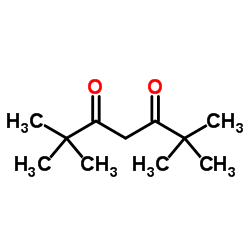Wavelength dependent photofragmentation patterns of tris(2,2,6,6-tetramethyl-3,5-heptanedionato)Ln (III) (Ln = Eu, Tb, Gd) in a molecular beam.
Franklin P Ow, Mary T Berry, P Stanley May, Jeffrey I Zink
文献索引:J. Phys. Chem. A 110(25) , 7751-4, (2006)
全文:HTML全文
摘要
Laser photoionization and ligand photodissociation in Ln(thd)(3) (Ln = Eu, Tb, Gd; thd = 2,2,6,6-tetramethyl-3,5-heptanedionato) are studied in a molecular beam via time-of-flight mass spectrometry. The fragmentation patterns are strongly wavelength dependent. With 355 nm excitation, the mass spectrum is dominated by Ln(2+), Ln(+), and LnO(+) fragments. The bare Ln ions are believed to arise from photoionization of neutral Ln atoms. The Ln atoms, in turn, are produced from the Ln(thd)(3) complex in a sequence of Ln reductions (through ligand-to-metal charge-transfer transitions), with each reduction being accompanied by the dissociation of a neutral ligand radical. In contrast, under visible-light (410-450 nm) excitation, a significant Ln(thd)(n)(+) signal is observed (where n = 2,3 for Ln = Tb,Gd and n = 1-3 for Ln = Eu). Thus, with visible excitation, photoionization of Ln(thd)(n) competes effectively with the Ln-reduction/ligand-dissociation sequence that leads to the dominant bare Ln-ion signal seen with 355 nm excitation. The fact that monoligated Ln(thd)(+) is observed only for Ln = Eu is interpreted in terms of the relative accessibility of an excited ligand-to-metal charge-transfer state from the ground electronic state of neutral Ln(thd).
相关化合物
| 结构式 | 名称/CAS号 | 分子式 | 全部文献 |
|---|---|---|---|
 |
2,2,6,6-四甲基-3,5-庚二酮
CAS:1118-71-4 |
C11H20O2 |
|
Ullmann diaryl ether synthesis: rate acceleration by 2,2,6,6...
2002-05-02 [Org. Lett. 4(9) , 1623-6, (2002)] |
|
26Mg as a probe in research on the role of magnesium in nutr...
1982-10-01 [Fed. Proc. 41(10) , 2709-13, (1982)] |
|
Ultrafine 239PuO2 aerosol generation, characterization and s...
1980-09-01 [Health Phys. 39(3) , 505-19, (1980)] |
|
[Tetrahedron 48 , 6909, (1992)] |
|
On the role of the bridging dicyanamidobenzene ligand in a n...
2006-11-13 [Inorg. Chem. 45(23) , 9332-45, (2006)] |